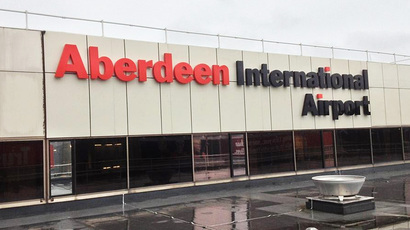A plane carrying 25 passengers between Aberdeen and Sumburgh stalled mid-flight after encountering “severe icing”, investigators have found.
The co-pilot admitted to the Air Accident Investigation Branch (AAIB) that he was “a little tired” and during the incident despite concern about what was being done, he felt unable to offer advice to the captain.
The co-pilot told investigators this was because the commander had “not been open” to a previous suggestion he made.
Both have extra simulator training since the “serious incident” investigation, and their experiences will be passed on to other pilots using the same aircraft.
The Loganair-operated Saab-Scania turboprop plane was flying to Shetland on October 3 last year, carrying 25 passengers and three crew members.
The two pilots had been on duty since 4.40am and had already completed two successful runs on the route.
De-icing systems on the engines, wings and stabilisers had been switched on at around 6,500ft but at 11,000 ft the pilot noticed small amounts of ice forming on the windscreen and then on the propeller spinner cones.
The plane had slowed in its climb but power and propeller speed were kept constant.
The co-pilot, who had been flying the aircraft for two years, later said that he realised that power should have been increased but did not raise it with the captain at the time.
The captain attempted to descend in order to increase airspeed using autopilot but the aircraft’s nose remained up and the pilot more than doubled the rate of descent.
The plane then began to vibrate and the cockpit recorder picked up the captain saying “Feel that, that’s a stall. I think icing stall”.
The co-pilot later compared the sensation to driving over a cattle grid.
The stall warning disconnected the autopilot and the captain took control, pitching the plane down with a “little more force than usual”.
The aircraft ultimately stabilised at 11,000ft and continued to Sumburgh without further incident.
A Loganair spokesman said passengers would have been unaware of the stall.
“Unusual ice formation” was found on the wings of the plane during later checks.
The co-pilot later said that he was “perhaps not as alert as he would have liked” having returned to work having had days off.
The flight commander, a line training captain was on his third early report shift but felt his performance was not negatively affected.
